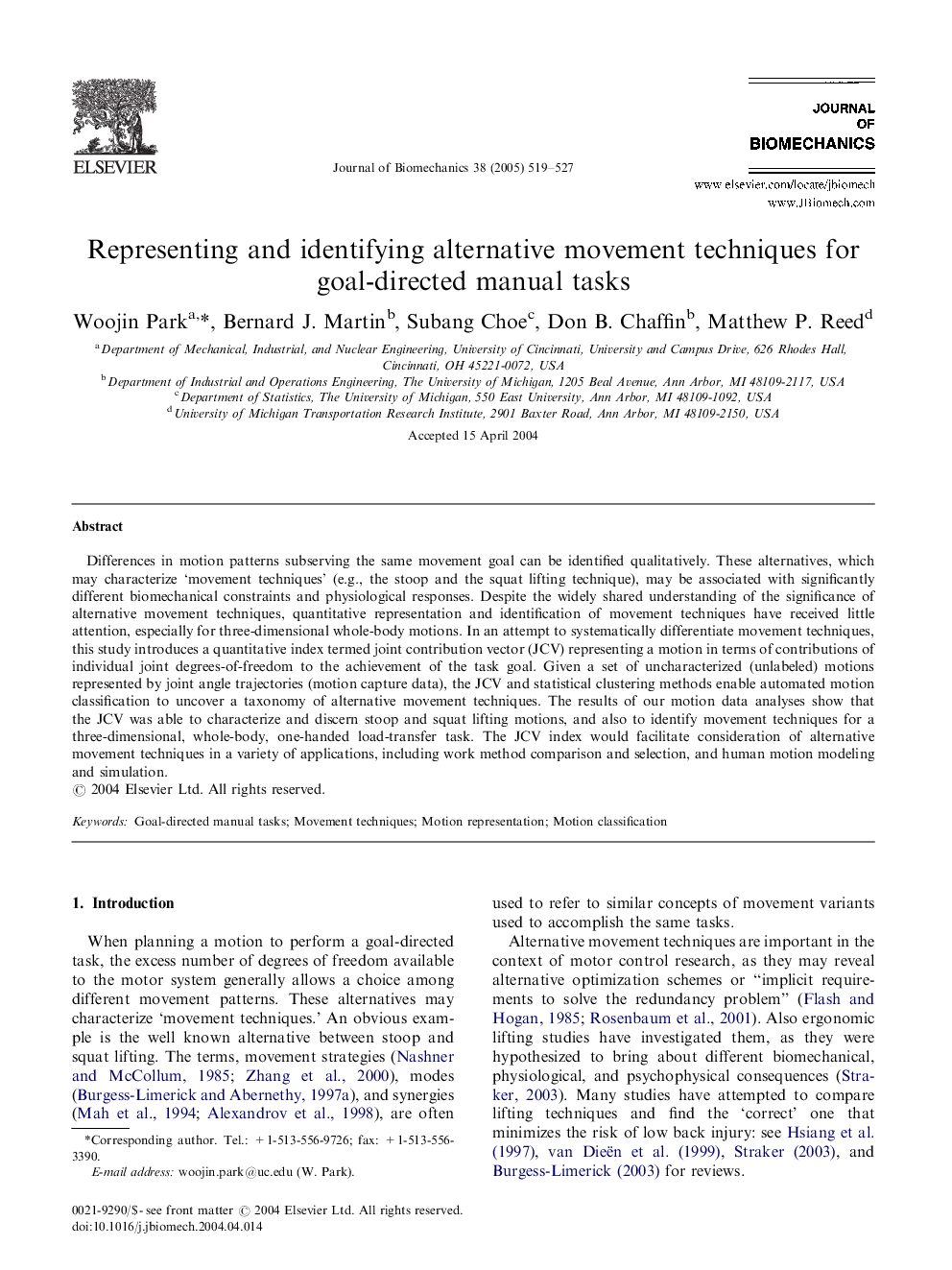| Article ID | Journal | Published Year | Pages | File Type |
|---|---|---|---|---|
| 10433718 | Journal of Biomechanics | 2005 | 9 Pages |
Abstract
Differences in motion patterns subserving the same movement goal can be identified qualitatively. These alternatives, which may characterize 'movement techniques' (e.g., the stoop and the squat lifting technique), may be associated with significantly different biomechanical constraints and physiological responses. Despite the widely shared understanding of the significance of alternative movement techniques, quantitative representation and identification of movement techniques have received little attention, especially for three-dimensional whole-body motions. In an attempt to systematically differentiate movement techniques, this study introduces a quantitative index termed joint contribution vector (JCV) representing a motion in terms of contributions of individual joint degrees-of-freedom to the achievement of the task goal. Given a set of uncharacterized (unlabeled) motions represented by joint angle trajectories (motion capture data), the JCV and statistical clustering methods enable automated motion classification to uncover a taxonomy of alternative movement techniques. The results of our motion data analyses show that the JCV was able to characterize and discern stoop and squat lifting motions, and also to identify movement techniques for a three-dimensional, whole-body, one-handed load-transfer task. The JCV index would facilitate consideration of alternative movement techniques in a variety of applications, including work method comparison and selection, and human motion modeling and simulation.
Related Topics
Physical Sciences and Engineering
Engineering
Biomedical Engineering
Authors
Woojin Park, Bernard J. Martin, Subang Choe, Don B. Chaffin, Matthew P. Reed,
